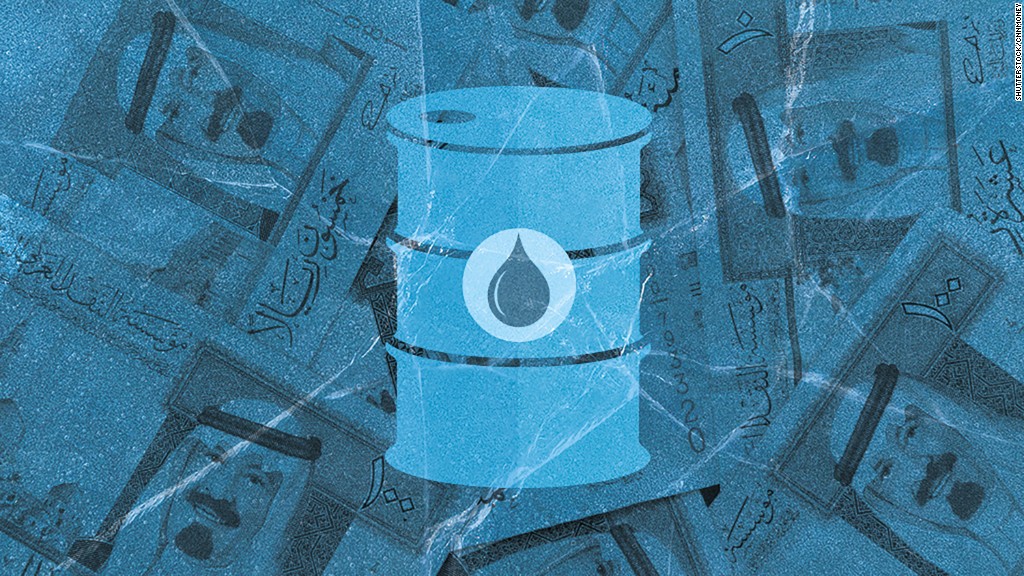
Blink and you may have missed it: World oil prices have jumped 30% in less than two weeks.
Talk of an output freeze among the major producers, led by Saudi Arabia and Russia, and encouraged by Venezuela and Qatar, may have helped the market find its floor.
But the world still has much more oil than it needs -- supply is outstripping demand by about 1.5 million barrels per day. That's equivalent to the output of Angola. And Iran is sticking firmly to its position that it won't freeze production, having lived under sanctions for the last four years.
Even among those ready to cap output at January's levels, there's an unwillingness to go further and cut production. Why? It's all about Asia.
Saudi Arabia and the other major Middle East producers, including Iraq, the United Arab Emirates and Kuwait, plus Russia, have put nearly all their energies in winning business in countries where demand for crude is still rising.
Right now, Asia represents the oil industry's only pot of gold.
"You put all the countries in Asia together, it is about 700,000 to 800,000 barrels a day of demand growth a year," said Fereidun Fesharaki, founder and chairman of FACTS Global Energy.
"We expect global oil demand growth this year to be 1.3 to 1.4 million barrels a day of which easily two-thirds to 70% are coming from Asia," he said.
Related: Saudi Arabia is trying to steal Iran's biggest oil customer
Unsurprisingly, it is the two biggest emerging markets, China and India, that garner most of the attention.
Despite what may turn out to be a dramatic economic slowdown, China imported a record 7.8 million barrels a day in December, equivalent to solid annual growth of 9%, according to OPEC research. India is playing catch up: it imported 4.2 million barrels per day to close out 2015 with an annual gain of 7%.
Their combined share of global daily demand has tripled to 16% since 1990, and is expected to double between now and 2040, according to forecasts from the Dubai Mercantile Exchange.
The UAE has certainly made India a priority.
The Crown Prince of Abu Dhabi, Sheikh Mohammed bin Zayed Al-Nahyan just finished a high profile visit to India to expand bilateral trade ties already worth $60 billion a year. Energy is a key pillar of that strategy, with current overall demand for Abu Dhabi's crude below 300,000 barrels a day.
"That can go much higher and there are many, many areas to explore in the oil sector," said Anwar Gargash, UAE minister of state for foreign affairs. He identified building strategic reserves, selling more to India, and refining more crude into gasoline and other products, as options to boost demand.
The biggest risk for the major producers comes from weaker economic growth. The scale of China's slowdown remains unclear, and Japan is already seeing oil demand starting to fall.
But that is not stopping the energy powers from forging new strategic links with China. Saudi Arabia and China have set up oil refineries on eachother's territory to cement their co-dependence. And back in June 2014, when the West put sanctions on Russia over Ukraine, China secured favorable terms in a 30-year oil and gas deal with Moscow.
The competition for Asia is the oil market's new high stakes game.


